Dreams have long intrigued and captivated human beings, offering a mysterious realm where our minds roam free. At times, the enigmatic symbols and stories that unfold during slumber can leave us pondering their significance long after we wake up. But what do these nocturnal visions really mean? What is the hidden message behind that flying dream or the teeth falling out? Unraveling the meanings behind these nightly visits can provide valuable insights into our subconscious minds and help us gain a deeper understanding of ourselves. In this article, we will delve into the world of dream symbols and explore various methods for interpreting them. So, join us on this fascinating journey as we unlock the secrets behind the symbols that dance across the landscape of our dreams.
The Importance of Analyzing Dream Symbols
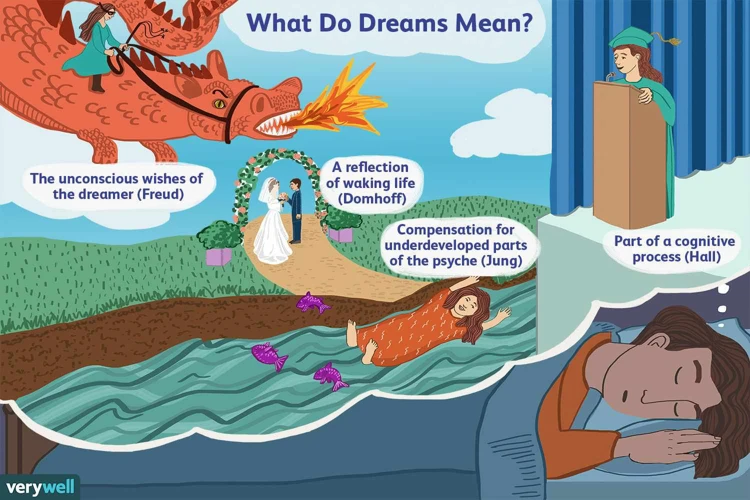
Dream symbols, with their intriguing and sometimes baffling nature, hold immense importance in understanding the depths of our subconscious minds. By analyzing these symbols, we can unlock a wealth of insights into our emotions, thoughts, and experiences. Each symbol serves as a doorway to hidden meanings and messages that can guide us on our journey of self-discovery. Whether it’s the feeling of flying representing freedom and liberation, falling symbolizing a loss of control or insecurities, or teeth falling out reflecting anxieties about appearance or communication, each symbol carries a unique significance that should not be ignored. By unraveling the mysteries behind these symbols, we can gain a deeper understanding of ourselves and the world around us.
Common Dream Symbols and Interpretations

1. Flying: This is one of the most common dream symbols and often represents a sense of freedom, empowerment, and liberation. It may indicate personal growth, the ability to overcome obstacles, or a desire for adventure. Flying dreams can also reflect the need to escape from a challenging situation or to rise above limitations.
2. Falling: Dreams of falling can evoke feelings of vulnerability, insecurity, or a loss of control in waking life. This symbol is often associated with anxieties and fears about failure, letting go, or the uncertainty of a new endeavor. It may also signify the need to regain balance or make better choices in order to prevent potential missteps.
3. Teeth Falling Out: Dreams of teeth falling out can be unsettling, but they often symbolize concerns related to self-image, communication, or personal power. The loss of teeth in a dream can suggest insecurities about one’s appearance, difficulties expressing oneself, or a feeling of powerlessness in certain situations. It may be a call to address these issues and regain confidence in one’s abilities.
4. Being Chased: Being chased in dreams can generate feelings of fear, anxiety, or a sense of being pursued in waking life. This symbol can represent unresolved conflicts, stressors, or repressed emotions that demand attention. It may also indicate a need to confront fears and assert oneself more assertively and confront challenges head-on. Chasing dreams often serve as reminders to confront and resolve issues rather than avoiding them.
1. Flying
The dream symbol of flying is one that often evokes a sense of exhilaration and freedom. When we dream of soaring through the sky, it can symbolize a desire to break free from limitations and experience a sense of liberation. This dream may indicate a need for independence, ambition, or a desire to escape from stressful situations. It can also represent a sense of empowerment and the ability to rise above challenges. Flying dreams can vary in their meaning depending on the context and emotions experienced during the dream. For example, flying effortlessly and joyfully may represent a sense of achievement and success, while struggling to stay airborne could reflect feelings of insecurity or lack of control. Exploring the deeper symbolism behind flying dreams can provide valuable insights into our subconscious desires and aspirations.
2. Falling
When we talk about the dream symbol of falling, we enter the realm of vulnerability, fear, and loss of control. This symbol often reflects a sense of insecurity or instability in our waking lives. Falling dreams can be associated with anxieties, whether they be related to work, relationships, or personal circumstances. They may also indicate a fear of failure or a lack of support. Falling dreams can serve as a wake-up call to examine the areas of our lives where we feel out of control or overwhelmed. By addressing these feelings head-on and seeking support or making necessary changes, we can regain a sense of stability and find our footing once again. So, next time you find yourself plummeting down in your dreams, pay attention to the emotions and circumstances surrounding the fall, as they may hold valuable insights into your waking life.
3. Teeth Falling Out
The dream symbol of teeth falling out is a common and powerful image that often leaves individuals feeling unsettled upon waking. This symbol is often associated with feelings of vulnerability, loss of power, or concerns about appearance or communication. In some interpretations, it may also signify a fear of aging or mortality. Exploring the possible meanings behind this symbol can lead to a deeper understanding of one’s fears, insecurities, or unresolved issues in waking life. By examining the context and emotions surrounding the dream, individuals can gain valuable insights into their subconscious thoughts and experiences. If you’re curious about other dream symbols, you may want to explore the meaning of a dreaming sting or a drowning dream.
4. Being Chased
Being chased is a common and unsettling dream symbol that often leaves us with a sense of fear and panic. It can represent a variety of underlying emotions and situations in our waking lives. When we dream of being chased, it may indicate a feeling of being overwhelmed or pursued by responsibilities, expectations, or unresolved issues. This symbol can also reflect a deep-seated fear of confrontation or avoidance of difficult situations. Additionally, being chased in a dream can point to the need for self-reflection and a desire to escape from certain aspects of our lives. Exploring the reasons behind this recurring dream symbol can provide valuable insights into our subconscious and help us address and overcome the challenges we may be facing. To learn more about dream symbols and their meanings, you can check our article on cruise ship dreams.
Understanding Personal Dream Symbols
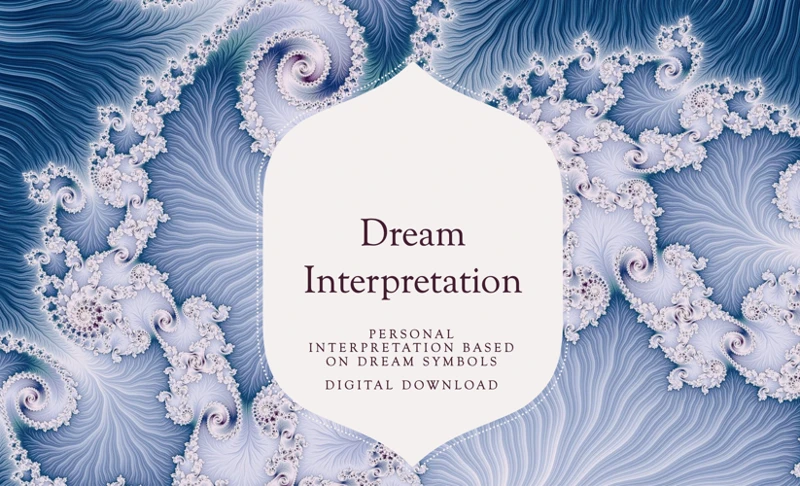
Understanding personal dream symbols is a key component to deciphering the messages within our dreams. These symbols often hold unique meanings that are specific to an individual’s life experiences, memories, and emotions. One common category of personal dream symbols is animals. For example, seeing a snake in a dream may have different interpretations for someone who has a fear of snakes compared to someone who sees them as a symbol of transformation. Similarly, places that appear in dreams can hold personal significance. A childhood home may evoke feelings of safety and nostalgia for one person, while for another it may represent a place of trauma. Additionally, people who appear in our dreams can provide valuable insights. It could be a deceased loved one offering guidance or a stranger representing qualities we admire or fear. Understanding these personal dream symbols requires introspection and reflection on our own personal associations and emotions tied to these symbols. By delving into the depths of our subconscious, we can unravel the hidden meanings behind the symbols that populate our dreamscape.
1. Animals
Animals are a common and powerful dream symbol that can hold various interpretations depending on the context and personal associations. The presence of animals in dreams often represents our primal instincts, emotions, or aspects of our personality. For example, a wolf may symbolize cunning or aggression, while a bird could signify freedom or spirituality. It is important to pay attention to the specific characteristics of the animal in the dream as well as our own feelings towards it. Additionally, the behavior of the animal and its relationship to the dreamer can provide further insights into the dream’s meaning. Keeping a dream journal can be helpful in identifying recurring animal symbols and their potential significance.
2. Places
In the realm of dreams, places hold great symbolism and meaning. The locations we encounter in our dreams can provide valuable insights into our emotions, experiences, and desires. For example, dreaming of a beach may symbolize relaxation, tranquility, or a need for escape from the stresses of daily life. Conversely, dreaming of a forest might represent mystery, exploration, or a need for self-discovery. Other common dream places, such as a school, office, or home, can reflect our feelings about learning, work, and personal life, respectively. Exploring the significance of these dream places can help us uncover hidden truths about ourselves, our aspirations, and our current circumstances.
3. People
When it comes to analyzing personal dream symbols, people can play a significant role. The individuals we encounter in our dreams often represent different aspects of ourselves or reflect the relationships and dynamics we have in our waking lives. A helpful approach to interpreting these dream symbols is to ask questions about the people present in the dream. Are they familiar faces or strangers? What are their actions, emotions, or attitudes in the dream? Are there any conflicts or interactions taking place? By exploring the characteristics and interactions of the people in our dreams, we can gain valuable insights into our own emotions, desires, and relationships.
Methods for Interpreting Dream Symbols
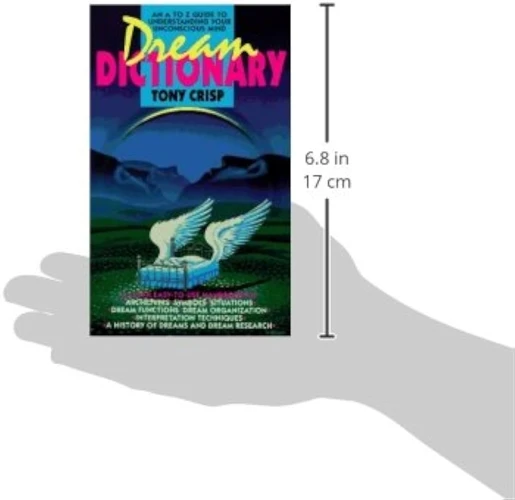
Exploring the meanings behind dream symbols can be a fascinating journey, but it can also be a challenging task. Fortunately, there are several methods that can aid in interpreting these elusive symbols. One effective method is keeping a dream journal, where you can record your dreams immediately upon waking. By noting down details such as symbols, emotions, and actions, you can establish patterns and recurring themes, providing valuable clues to their meanings. Another approach is to analyze the emotions experienced during the dream. Emotions often hold significant weight in dreams and can offer insight into underlying desires or conflicts. Lastly, seeking professional help, such as consulting a therapist or dream analyst, can provide a deeper level of interpretation. These experts can offer guidance and expertise in deciphering the complex symbolism within your dreams. Utilizing these methods can unlock the rich tapestry of your dream symbols and help you gain a greater understanding of your subconscious mind.
1. Keeping a Dream Journal
Keeping a dream journal is a powerful method for interpreting dream symbols and uncovering their meanings. By documenting your dreams immediately upon waking, you capture the details and emotions while they are still fresh in your mind. This practice helps in identifying recurring patterns, symbols, or themes that may hold significance. In your dream journal, make sure to include as many details as possible, such as the people, places, objects, and emotions experienced in the dream. By organizing and reviewing your dream journal regularly, you can start to identify connections and patterns that can assist you in interpreting the symbols and messages hidden within your dreams. Additionally, by revisiting your dream journal over time, you may notice how the meaning behind certain symbols evolves and changes, providing valuable insights into your personal growth and development.
2. Analyzing Emotions
Analyzing the emotions experienced during a dream is a crucial aspect of understanding its symbolism. Emotions serve as powerful indicators of our subconscious thoughts and desires, providing key insights into the message behind the dream. When exploring dream symbols, pay close attention to the feelings that arise within you. Are you overwhelmed by fear and anxiety when being chased? This could indicate a sense of being pursued or running away from something in your waking life. By delving deep into these emotions, we can unravel the underlying meanings of our dreams and gain deeper self-awareness.
3. Seeking Professional Help
When it comes to interpreting dream symbols, sometimes seeking professional help can provide valuable guidance and insights. Psychologists and therapists who specialize in dream analysis can offer a wealth
Subscribe to Our Newsletter
Sign up to receive the latest news and updates.
Exploring Cultural Dream Symbolism
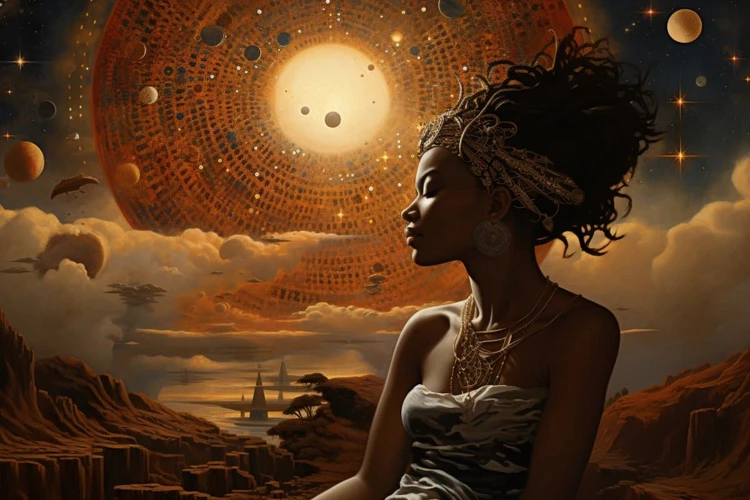
Exploring cultural dream symbolism offers a fascinating glimpse into the diverse interpretations and meanings attached to dreams across different societies and time periods. In ancient civilizations, dreams held great significance and were often considered sacred or prophetic. For example, in ancient Egypt, dreams were believed to be messages from the gods, guiding individuals through important decisions and events. Eastern cultures, such as those in China and Japan, also have rich traditions of dream analysis, with specific symbols and their interpretations deeply ingrained in their cultural beliefs. Even in modern times, dream symbolism continues to evolve and adapt, reflecting the ever-changing landscapes of our collective consciousness. By studying cultural dream symbolism, we can expand our understanding of the human experience and gain new perspectives on the mysteries of our own dreams.
1. Dreams in Ancient Civilizations
Dreams have held a significant place in the beliefs and culture of ancient civilizations. In many ancient societies, dreams were seen as powerful messages from the divine or as portals to communicate with the spiritual realm. For example, in ancient Egypt, dreams were seen as a means of receiving guidance from the gods, and dream interpreters were highly revered for their ability to decipher these messages. Similarly, the Greeks and Romans believed that dreams were reflections of their own desires, fears, and omens of the future. These ancient civilizations recognized the importance of dreams and the hidden symbols they contained, using them as a tool for guidance, prophecy, and self-reflection. The study of dreams in ancient cultures provides us with a glimpse into the profound significance these symbols held and their influence on personal and societal beliefs.
2. Dream Symbolism in Eastern Cultures
Dream symbolism in Eastern cultures holds a rich and fascinating history. In Chinese culture, dreams are seen as messages from the spiritual realm and are heavily influenced by Taoism and Confucianism. Water, for example, is often associated with the flow of life and emotions, while dragons symbolize power and good fortune. In Indian culture, dreams are seen as divine messages or warnings. The interpretation of dreams is deeply rooted in Hindu and Buddhist beliefs, where symbols such as elephants signify wisdom and knowledge, snakes represent transformation and rebirth, and lotus flowers symbolize spiritual enlightenment and purity. Understanding the dream symbolism in Eastern cultures offers a unique perspective on how different societies interpret the messages from the subconscious mind.
3. Modern Dream Symbolism
Modern dream symbolism has evolved alongside the ever-changing landscape of our society and culture. In today’s fast-paced world, we are surrounded by new technologies and experiences that have woven themselves into the tapestry of our dreams. Symbols such as smartphones, social media, or virtual reality can now appear in our dreams, reflecting our obsession with connectivity and technology. Additionally, modern dreams may also incorporate symbols related to work-related stress, financial concerns, or the fear of missing out. These symbols highlight the unique challenges and aspirations of our contemporary lives and provide valuable insights into our subconscious desires and fears. Exploring modern dream symbolism can offer a fascinating glimpse into the mindset of our generation and shed light on the impact of modern society on our dreamscape.
Using Dream Dictionaries and Online Resources
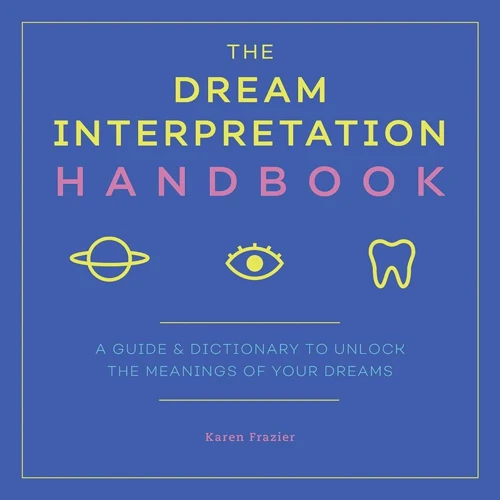
When it comes to unraveling the meanings of dream symbols, using dream dictionaries and online resources can be incredibly helpful. These resources provide a vast collection of symbols and their interpretations, allowing you to explore various possibilities and uncover hidden meanings behind your dreams. Dream dictionaries often categorize symbols alphabetically or thematically, making it easier to find specific symbols and their associated interpretations. Some online resources even provide interactive features where you can search for symbols or participate in forums to discuss and gain insights from other dream enthusiasts. Additionally, many mobile applications are available, allowing you to access dream interpretation guides on the go. However, it’s important to remember that while these resources can offer valuable insights, the interpretations may not always resonate with your personal experiences and emotions. Ultimately, the most meaningful interpretations will come from exploring your own connection to the symbols and deciphering their unique significance to you.
Tips for Enhancing Dream Recall
Enhancing dream recall is an essential practice for those seeking to explore the meanings behind their dreams. Here are some tips to help improve your ability to recall dreams:
1. Keep a dream journal: Keep a notebook or use a dream journal app to record your dreams immediately upon waking. This practice helps reinforce the habit of remembering and encourages recollection of details.
2. Create a bedtime ritual: Establishing a relaxing bedtime routine can aid in dream recall. Engage in activities such as meditation, listening to soothing music, or visualizing positive imagery before sleep.
3. Set intentions: Before sleep, affirm your intention to remember your dreams. Repeat a simple mantra like “I will remember my dreams” to reinforce the message to your subconscious mind.
4. Avoid disruptions: Minimize distractions like excessive noise, bright lights, or interruptions during sleep. A peaceful sleep environment can lead to better dream recall.
5. Practice waking up naturally: If possible, allow yourself to wake up naturally without the aid of an alarm clock. Abrupt awakenings can often result in a loss of dream recall.
By incorporating these tips into your routine, you can enhance your ability to remember and analyze your dreams, ultimately leading to a deeper understanding of their symbols and meanings.
Conclusion
In conclusion, analyzing dream symbols opens up a world of self-discovery and understanding. These symbolic messages from our subconscious minds can provide valuable insights into our emotions, fears, desires, and experiences. By exploring common dream symbols and understanding their interpretations, as well as delving into our personal dream symbols and seeking professional help when needed, we can gain a deeper understanding of ourselves and navigate our waking lives with more clarity and purpose. Dream symbolism is not only fascinating but also a powerful tool for personal growth. So, embrace the magic of your dreams, unravel their meanings, and embark on a journey of self-discovery that transcends the boundaries of reality.
Frequently Asked Questions
1. Can dreams predict the future?
While some people believe that dreams can predict the future, there is no scientific evidence to support this notion. Dreams are typically influenced by our thoughts, emotions, and experiences, rather than offering glimpses into the future.
2. Why do we forget our dreams?
Forgetting dreams is a common occurrence. The rapid-eye-movement (REM) stage of sleep, when most dreams occur, is associated with a shallow level of sleep. This can make it more difficult for the brain to consolidate dream memories, leading to forgetfulness upon waking up.
3. Are recurring dreams significant?
Recurring dreams can hold significant meaning. They often serve as reminders or warnings about unresolved issues or emotions in our lives. Paying attention to recurring dream symbols and exploring their interpretations can help us address these underlying concerns.
4. What does it mean if I dream about being naked in public?
Dreaming about being naked in public usually represents vulnerability, embarrassment, or a fear of being exposed. It may suggest feelings of insecurity or a lack of confidence in certain aspects of your life.
5. Can dream symbols have different meanings for different people?
Absolutely. Dream symbols are highly personal and can carry different meanings for different people based on their individual experiences, beliefs, and cultural backgrounds. It’s important to consider your own unique interpretation when analyzing dream symbols.
6. Can stress affect the content of our dreams?
Yes, stress can significantly impact our dream content. High-stress levels can lead to more intense and vivid dreams, often featuring common stress-related themes such as being chased, falling, or feeling trapped.
7. What is lucid dreaming?
Lucid dreaming occurs when the dreamer becomes aware that they are dreaming while still in the dream. This state of awareness allows them to control and manipulate the dream’s events, leading to a heightened sense of participation and exploration within the dream world.
8. Are nightmares a cause for concern?
While nightmares can be unsettling and distressing, they are usually a normal part of the dream experience. However, recurrent nightmares that significantly disrupt your sleep or cause severe distress may be worth discussing with a healthcare professional.
9. Do specific colors in dreams have symbolic meanings?
Colors in dreams can carry symbolic meanings that vary across cultures and personal experiences. For example, red may represent passion or anger, while blue may symbolize calmness or sadness. It’s important to consider the context and your own associations with colors when interpreting dream symbolism.
10. How long do dreams typically last?
Dreams can vary in length, but they typically occur during the rapid-eye-movement (REM) stage of sleep, which lasts for about 10 to 15 minutes. However, multiple dreams can occur throughout the night, as we cycle through different stages of sleep.










